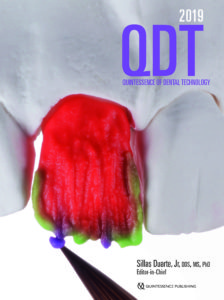Reading time: 15 minutesSpecial Offer
 Celebrate 70 Years of Quintessence!
Celebrate 70 Years of Quintessence!
Since its founding in 1949 in Berlin, Germany, the Quintessence Publishing name has come to represent a commitment to quality that is unsurpassed in the dental publishing world. For seven decades now, Quintessence has provided the latest scientific and clinical information in formats designed to meet the varying needs of the dental community. Dental practitioners, researchers, and students alike have all come to rely on Quintessence for timely articles, clearly written and superbly illustrated books, and cutting-edge symposia presented by world-renowned experts.
Our company would be nothing without the support of the dental community, so we invite you to celebrate this special anniversary with us! We are celebrating 70 years of Quintessence by offering up to 70% off select titles, making now the perfect time to update your library with the latest in dental literature. You can view the full list of discounted titles here. To take advantage of this offer, use discount code 70YEARS while ordering online or call (630)736-3600 to order by phone. This sale will end April 30, 2019, so hurry and place your order while this offer lasts!
This offer is only valid in North and South America.
New Titles in Books
 Lit: The Simple Protocol for Dental Photography in the Age of Social Media
Lit: The Simple Protocol for Dental Photography in the Age of Social Media
Miguel A. Ortiz
In the age of digital dentistry, dental providers are under increased pressure to demonstrate proficiency in dental photography for the purposes of documentation, shade matching, and laboratory communication. Expertise in this area is fast becoming part of the standard of care and also has added value for clinicians who are looking to market themselves online. This book is geared toward practitioners who want to master dental photography and build their social media presence. Written for visual learners, this book breaks down the fundamentals of dental photography by outlining the key concepts, equipment, and lighting as well as by introducing “The Simple Protocol”—the basic day-to-day intraoral protocol that shows how easily clinical photography can be incorporated into the clinical workflow. That is where most photography books end, but this author also explores advanced techniques and demonstrates how to achieve some of the most characteristic looks in artistic dental photography, including the glossy effect, chiaroscuro, chromaticity, and texture manipulation, as well as a simple setup for taking photographs in the dental laboratory. Finally, the author provides fresh insight into the ever-changing world of digital marketing and explains what you need to know to reach your market on social media.
248 pp; 357 illus; ©2019; ISBN 978-0-86715-802-1 (B8021); $148 Special preorder price! $118
Available June 2019
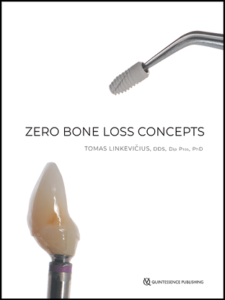 Zero Bone Loss Concepts
Zero Bone Loss Concepts
Tomas Linkevičius
Bone loss is still a major issue that dentists encounter, but it is a complication that can be prevented. By combining clinical experience with peer-reviewed scientific evidence, the author of this book has put together a guide that any implant specialist will find invaluable to prevent bone loss in their patients. Different strategies are presented that can be used to achieve zero bone loss years after treatment. Because successful treatment depends on both the surgical and prosthetic components, the book is divided into two parts, each focusing in depth on what must be done in each phase to promote bone stability. Case presentations detail many types of clinical situations, implant choices, and prosthetic solutions, all backed by evidence-based clinical studies that have proven success.
304 pp (hardcover); 1,231 illus; ©2019; ISBN 978-0-86715-799-4 (B7994); $198 Special preorder price! $158
Available June 2019
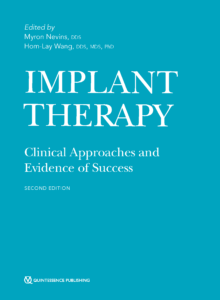 Implant Therapy: Clinical Approaches and Evidence of Success, Second Edition
Implant Therapy: Clinical Approaches and Evidence of Success, Second Edition
Edited by Myron Nevins and Hom-Lay Wang
Since the publication of the first edition of this book 20 years ago, the landscape of implant dentistry has changed dramatically. Both the industry and patient demand have expanded exponentially, leaving the clinician with many decisions to make (and often as many questions to ask) regarding patient selection, surgical timing and techniques, implant types, and restorative approaches. This volume brings together the knowledge of the foremost leaders in implant dentistry, covering all aspects of the treatment process, from decision-making and treatment planning through imaging, surgical techniques, bone and soft tissue augmentation, multidisciplinary approaches, loading protocols, and finally strategies for preventing and treating complications and peri-implantitis as well as providing effective implant maintenance therapy. Filled with expert knowledge based on decades of research and clinical experience as well as abundant illustrations and clinical case presentations, this book is an indispensable resource for clinicians seeking to provide implant treatment at the highest standard of care.
544 pp; 1,782 illus; ©2019; ISBN 978-0-86715-798-7 (B7987); $328 Special preorder price! $265
Available June 2019
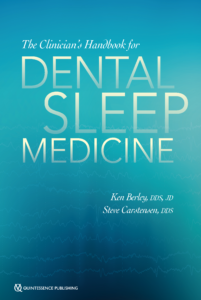 The Clinician’s Handbook for Dental Sleep Medicine
The Clinician’s Handbook for Dental Sleep Medicine
Ken Berley and Steve Carstensen
It has been estimated that 20 million Americans suffer from moderate to severe OSA, and at least one patient in five has mild OSA. The primary treatment prescribed by sleep physicians is CPAP, but patient compliance with this therapy is unacceptably low, between 25% and 50%. There is a significant opportunity for dentists to provide a viable alternative therapy—oral appliance therapy (OAT). OAT results in much better adherence to therapy than CPAP, and while OAT is not as efficacious as CPAP, this increased compliance results in comparable therapeutic results. Currently, a board-certified sleep physician is the only medical professional qualified to diagnose OSA and other sleep-related breathing disorders (SRBDs), so dentists must coordinate with a sleep physician to provide OAT. This book is the how-to guide, a gateway to a successful dental sleep medicine practice. Written by two experts in the field, it clearly delineates the dentist’s role in the treatment of SRBDs and gives practical advice for how to incorporate dental sleep medicine into an existing dental practice, not to mention how to work with sleep physicians to best support patient care. In addition to step-by-step instructions for examination, appliance selection, and follow-up care, complications of OAT, legal issues, and medical insurance and Medicare considerations are included to fully prepare the dentist for the journey into dental sleep medicine.
240 pp (softcover); 60 illus; ©2019; ISBN 978-0-86715-813-7 (B8137); Now available! $72
Read more about The Clinician’s Handbook for Dental Sleep Medicine here!
Obstructive Sleep Apnea: A Deadly Disease with a Dental Solution
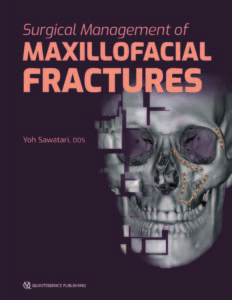 Surgical Management of Maxillofacial Fractures
Surgical Management of Maxillofacial Fractures
Yoh Sawatari
The facial skeleton is comprised of vertical and horizontal buttresses and the intersections they create; maxillofacial fractures occur when these buttresses sustain more force than they can withstand. The objective when managing these fractures is to reverse the damage that these buttresses sustained and restore appropriate facial dimensions. Not all fractures propagate in the same pattern, so surgeons must compartmentalize the face and define the character of the individual bones. This book approaches the face one bone at a time, outlining how to evaluate each type of fracture, the indications for surgery, the surgical management, and any complications. Specific protocols for clinical, radiographic, and CT assessment are included, as well as step-by-step approaches for surgical access and internal reduction and fixation. Isolated fractures are rare with maxillofacial trauma, and the author discusses how to sequence treatment for concomitant fractures to ensure the most successful outcome. This book is a must-have for any surgeon managing maxillofacial fractures.
256 pp; 254 illus; ©2019; ISBN 978-0-86715-794-9 (B7949); Now available! $178
Read more about Surgical Management of Maxillofacial Fractures here!
Architects of the Face: Rebuilding After Maxillofacial Trauma
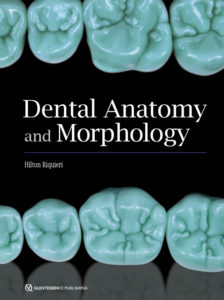 Dental Anatomy and Morphology
Dental Anatomy and Morphology
Hilton Riquieri
This beautiful atlas conveys not only the practical knowledge of dental anatomy but also the art of sculpting it in wax. The ideal anatomy of each dental structure is described in detail and the waxing techniques are beautifully illustrated step by step for visual reference. The author demonstrates that for every morphologic feature there is an explanation in nature, assigning significance to every minute feature of dental morphology. Organized by tooth and arch, this book views morphology through a clinical lens and repeatedly draws connections between anatomical features and clinical concepts. The fundamental knowledge presented in this text is essential for improving waxing and sculpting techniques and will be useful for students and specialists alike.
332 pp; 1,507 illus; ©2019; ISBN 978-0-86715-770-3 (B7703); Now available! $172
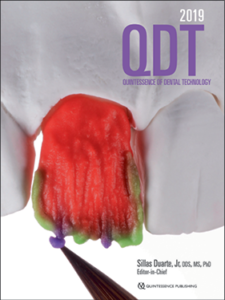 Quintessence of Dental Technology 2019: Volume 42
Quintessence of Dental Technology 2019: Volume 42
Edited by Sillas Duarte, Jr
QDT 2019 presents a potpourri of original articles highlighting new techniques and novel approaches for creating beautiful smiles—both in form and function. Featured articles include an innovative procedure for predictably matching a veneer to an implant crown, a program for producing a personalized smile based on its visual identity, and the Plane System for virtual functional and esthetic analysis, diagnosis, and CAD/CAM fabrication. These are but a few of the pearls found in this year’s beautifully produced annual resource for the dental technician and restorative clinician.
232 pages; 1,000+ illus; ©2019; ISBN 978-0-86715-816-8 (JQ630); Now available! $156
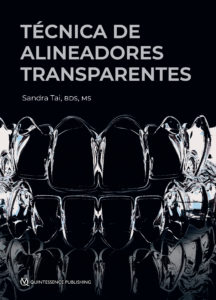 Técnica de Alineadores Transparentes
Técnica de Alineadores Transparentes
Sandra Tai
Los alineadores transparentes son el futuro de la ortodoncia, pero la ortodoncia digital evoluciona tan rápidamente que es difícil estar al día. Este libro trata sobre el uso de alineadores transparentes desde una perspectiva de diagnóstico y planificación del tratamiento; también, discute cómo se aplican principios de biomecánica y anclaje en el uso de estas técnicas. Cada capítulo explica cómo usar alineadores transparentes para tratar una oclusión no óptima y enseña a los expertos a diseñar un tratamiento adecuado usando el software disponible, así como la manera de hacer el tratamiento clínico y terminarlo. Este manual clínico preparará a los ortodoncistas y estudiantes dentales a superar las expectativas del paciente con los aparatos ortodónticos más estéticos disponibles hoy en día.
308 pp; 1,344 ilus; ©2019; ISBN 978-0-86715-789-5 (E7895); Now available! $118
Read more about Técnica de Alineadores Transparentes here!
Clear Aligner Technique: Bringing Orthodontic Treatment into the Digital Era
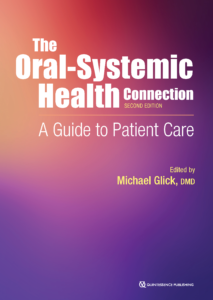 The Oral-Systemic Health Connection: A Guide to Patient Care, Second Edition
The Oral-Systemic Health Connection: A Guide to Patient Care, Second Edition
Edited by Michael Glick
As the oral-systemic health connection continues to be the focus of an overwhelming amount of scientific literature, it is important for dentists to stay informed in order to be a reliable source of information for their patients regarding both oral and overall health. This second edition of The Oral-Systemic Health Connection: A Guide to Patient Care explores the connections between oral infections and systemic diseases/conditions, incorporating feedback from scientists, practitioners, and policymakers. In addition to updated chapters about cardiovascular disease, diabetes, inflammation, and adverse pregnancy outcomes, authors have contributed new chapters about antibiotic prophylaxis, the genomic connection, common risk factors, and the economic impact of this connection. Because interpreting this research can be challenging, new chapters about causal frameworks and biostatistical assessment have been added, and specific clinical considerations for providing dental care to patients with certain conditions have been included in selected chapters. Besides providing readers with up-to-date information on the complex connection between oral and general health, this book prepares oral health care professionals to critically read and evaluate new research to ultimately benefit their patients’ overall health.
384 pp (softcover); 85 illus; ©2019; ISBN 978-0-86715-788-8 (B7888); Now available! $48
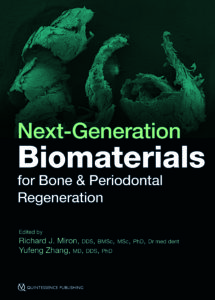 Next-Generation Biomaterials for Bone & Periodontal Regeneration
Next-Generation Biomaterials for Bone & Periodontal Regeneration
Edited by Richard J. Miron and Yufeng Zhang
New and innovative biomaterials are being discovered or created in laboratories at an unprecedented rate, but many of them remain entirely foreign to practicing clinicians. This book addresses this gap in knowledge by summarizing some of the groundbreaking research performed to date on this topic and providing case examples of these biomaterials at work. The book begins with a review of the biologic background and applications of bone grafting materials utilized in dentistry. The principles of guided tissue and bone regeneration are covered in detail, including many recent advancements in barrier membrane technologies as well as use of platelet-rich fibrin and various growth factors, and many next-generation materials that will optimize future bone and periodontal regeneration are presented. The final chapter is designed to help clinicians select appropriate biomaterials for each specific regenerative protocol. Much like one implant size and shape cannot be utilized for every indication in implant dentistry, one bone grafting material, barrier membrane, or growth factor cannot maximize regenerative outcomes in all clinical situations. This textbook teaches clinicians how to utilize biomaterials in an appropriate, predictable, and evidence-based manner.
384 pp; 960 illus; ©2019; ISBN 978-0-86715-796-3 (B7963); Now available! $218
Read more about Next-Generation Biomaterials for Bone & Periodontal Regeneration here!
Next-Generation Biomaterials: What They Are, Why You Need to Know About Them, and Which Ones Should Intrigue You
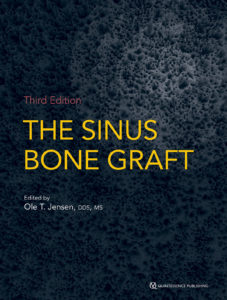
The Sinus Bone Graft, Third Edition
Edited by Ole T. Jensen
As research proceeds on treatment of the resorbed posterior maxilla, new techniques and innovations continue to be adopted to solve this clinical problem. While the previous edition of this book provided detailed information on the types of grafting materials and procedures available at the time, this completely revised version looks to the future with new strategies for treatment, some of which avoid grafting altogether. This book not only reviews the time-tested lateral window approach for sinus elevation and grafting but also describes a variety of techniques to approach the sinus transcrestally with or without grafting material. One section of the book is devoted entirely to the different types of implants and implant placement techniques available, many of which are designed specifically to avoid sinus elevation. In addition to clinical case studies and descriptions of how to perform specific surgical procedures, this book includes discussions on the science of bone formation and how continued research brings us closer every day to the ultimate goal of using tissue engineering to completely regenerate new teeth.
288 pp; 948 illus; ©2019; ISBN 978-0-86715-791-8 (B7918); Now available! $168
Read more about The Sinus Bone Graft, Third Edition here!
Introducing The Sinus Bone Graft, Third Edition, edited by Ole T. Jensen
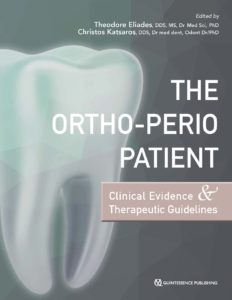 The Ortho-Perio Patient: Clinical Evidence & Therapeutic Guidelines
The Ortho-Perio Patient: Clinical Evidence & Therapeutic Guidelines
Edited by Theodore Eliades and Christos Katsaros
Although most orthodontic curricula provide courses on interdisciplinary orthodontic-periodontic treatment, there are still surprisingly few resources on the topic. Written by leading scholars in the field, this book provides a broad analysis of the topic from both the periodontal and orthodontic perspectives. The authors systematically analyze the scientific and clinical interactions of these specialties by reviewing all the available evidence and using case studies to demonstrate principles discussed in theory. The result is a text that outlines the treatment fundamentals and shows how to improve the therapeutic outcomes involving orthodontic-periodontic interventions.
224 pp; 346 illus; ©2019; ISBN 978-0-86715-679-9 (B6799); Now available! $128
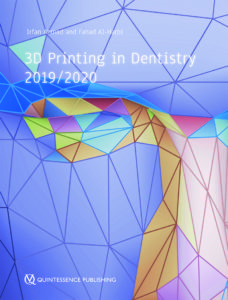 3D Printing in Dentistry 2019/2020
3D Printing in Dentistry 2019/2020
Irfan Ahmad and Fahad Al-Harbi
The invention of 3D printing technology and its microprecision products are revolutionizing the way dentistry is practiced. However, as with any new technology, many clinicians are uncertain of where to start. The purpose of this book is to arm clinicians with what they need to know to incorporate 3D printing into daily practice. After a brief discussion of the evolution of 3D printing and the scientific credence behind it, the first section examines the fundamental concepts and the latest trends in digital dentistry, including intra-oral scanning, 3D printers, 3D materials, and CAD/CAM processes. The second half of the book presents clinical case studies that apply 3D printing to treat surgical, orthodontic, prosthodontic, restorative, and esthetic cases. These cases examine the benefits and limitations of 3D printing technology in density. This text is a must-have for dentists wanting to understand the future of dentistry.
256 pp; 390 illus; ©2019; ISBN 978-1-78698-026-7 (BL083); Now available! $138
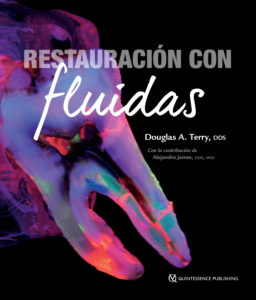 Restauración con fluidas
Restauración con fluidas
Douglas A. Terry
Este libro contiene las distintas aplicaciones de los compuestos de resina fluidos de nueva generación y las presenta paso a paso. Los primeros capítulos tratan sobre su evolución y la ciencia que respalda el concepto de su diseño adhesivo y la técnica compuesta de resina inyectable. Los capítulos siguientes presentan casos en los que se recurre a su uso clínico, como restauraciones anteriores y posteriores, coronas pediátricas, adhesiones de restauraciones indirectas, desarrollo del sitio de póntico ovoide, eliminación de la sensibilidad en el cervical del diente, sellado inmediato de la dentina, reparación de dentadura fracturada, entre otros. Cada presentación de caso incluye los varios diseños de adhesivos preparativos, técnicas reconstituyentes, protocolos adhesivos y los procedimientos finales correspondientes. Con el uso de este material ampliará las opciones de tratamiento dental, la precisión y la predictibilidad, reduciendo el tiempo del paciente en su consultorio.
292 pp; 914 illus; ©2019; 978-0-86715-775-8 (E7758); Now available! $118
Read more about Restauración con fluidas here!
Flowable Composite Resins: Esthetics at Your Fingertips
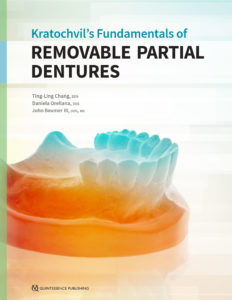 Kratochvil’s Fundamentals of Removable Partial Dentures
Kratochvil’s Fundamentals of Removable Partial Dentures
Ting-Ling Chang, Daniela Orellana, and John Beumer III
In the 1960s, Professor F. J. Kratochvil recognized the importance of biomechanics in removable partial denture (RPD) design and used these principles to develop a new design philosophy. This “RPI system”—a clasp assembly consisting of a rest, a proximal plate, and an I-bar retainer—changed how clinicians approach partial denture design and is now used throughout the world. This textbook provides an overview of Kratochvil’s design philosophy and the basic principles of biomechanics it is based upon. Topics include components of RPDs and their functions, design sequences for maxillary and mandibular RPDs, and techniques for surveying and determining the most advantageous treatment position. A chapter dedicated to digital design and manufacturing of RPD frameworks highlights new technology in this emerging field. Additional topics include optimizing esthetic outcomes through attachments and rotational path RPDs as well as applying the RPI system to patients with maxillofacial defects. The authors provide illustrations of clinical cases throughout the book as well as an illustrated glossary of prosthodontic terminology. This textbook will prepare students and general practitioners to design and fabricate a biomechanically sound RPD framework for just about any dental configuration they encounter.
240 pp; 748 illus; ©2019; ISBN 978-0-86715-790-1 (B7901); Now available! $108
Read more about Kratochvil’s Fundamentals of Removable Partial Dentures here!
Kratochvil’s RPD Design Principles Five Decades Later: How Today’s Prosthodontists Continue to Build Upon His Legacy
Current Issues in Journals

Featured article: Connective Tissue Graft Stabilization by Subperiosteal Sling Suture for Periodontal Plastic Surgery Using the VISTA Approach
Jonathan H. Do
New Bone Formation Using an Extracted Tooth as a Biomaterial: A Case Report with Histologic Evidence
Daniele Cardaropoli, Myron Nevins, and Peter Schupbach
The Effect of Dental Implant Collar Design on Crestal Bone Loss at 1 Year After Implant Placement
Elizabeth Felts Randall, Ramzi V. Abou-Arraj, Nico Geurs, Russell Griffin, Michael Reddy, and Mia Geisinger

Invited Commentary: Is Osseointegration a Foreign Body Reaction?
John E. Davies
Development and Validation of the French Version of the Orofacial Esthetic Scale
Thi-Lan N’Guyen-Van, Nathan Moreau, and Adeline Braud
Implant Survival in the Posterior Partially Edentulous Arch—30 Years of Experience. Part IV: A Retro-Prospective Multivariable Regression Analysis on Implant Failures Related to Arch and Implant Surface
Torsten Jemt

Featured article: Ligature-Induced Peri-implant Bone Loss Around Loaded Zirconia and Titanium Implants
Stefan Roehling, Michael Gahlert, Simone Janner, Bo Meng, Henriette Woelfler, and David L. Cochran
Thematic abstract review: Oral Implants Made of Zirconia: An Update for 2019
Guy Huynh-Ba
TiO2-Modified Zirconia Surface Improves Epithelial Cell Attachment
Sini Riivari, Khalil Shahramian, Ilkka Kangasniemi, Jaana Willberg, and Timo O. Närhi

Nortriptyline Compared to Amitriptyline for the Treatment of Persistent Masticatory Myofascial Pain
Yaron Haviv, Avraham Zini, Yair Sharav, Galit Almoznino, and Rafael Benoliel
Tooth Clenching Until Exhaustion Evokes Exercise-Induced Hypoalgesia in Healthy Persons and in Patients with Temporomandibular Disorders
Sarah Vaderlind Lanefelt, Mauricio Mélo-Gómez, Mariam Chizari, Mirna Krsek, Nikolaos Christidis, Eva Kosek, and Malin Ernberg
A Prediction Model for Types of Treatment Indicated for Patients with Temporomandibular Disorders
Naichuan Su, Corine M. Visscher, Arjen J. van Wijk, Frank Lobbezoo, and Geert J.M.G van der Heijden

Mandibular molar distalization with clear aligners in Class III patients
Kamy Malekian, Simone Parrini, Francesco Garino, Andrea Deregibus, and Tommaso Castroflorio
Temporary Anchorage Devices (TADs) and Invisalign: A combination that can be used to meet aesthetic expectations in the orthodontic treatment of adult patients
Andrea Eliseo and Gianluigi Fiorillo
Initial therapy of occlusion
Werner Schupp, Wolfgang Boisserée, Maria Tabancis, and Julia Funke
Dental Meetings Quintessence Will Attend in April
AAE19: Booth #3311
hosted by the American Association of Endodontists April 10–13 in Montreal, Canada
AACD 2019: Booth #911
hosted by the American Academy of Cosmetic Dentistry April 24–27 in San Diego, California
ITI Congress North America: Booth #201
hosted by the International Team for Implantology April 25–27 in San Francisco, California
Upcoming Quintessence Events
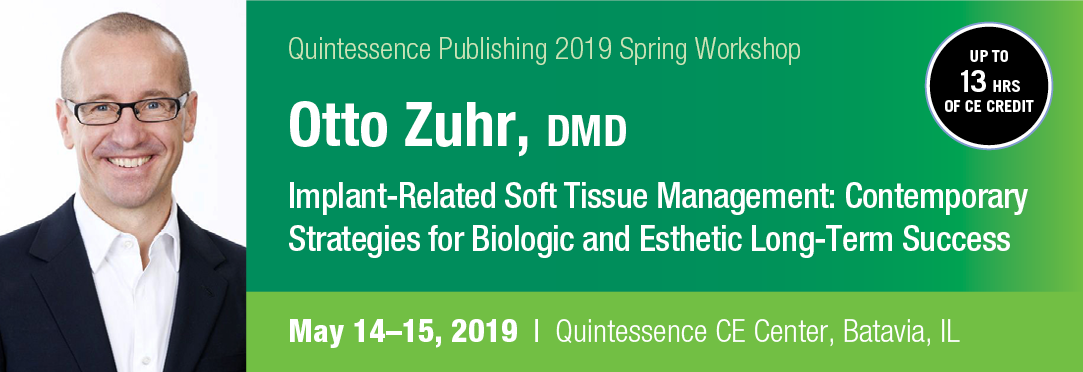

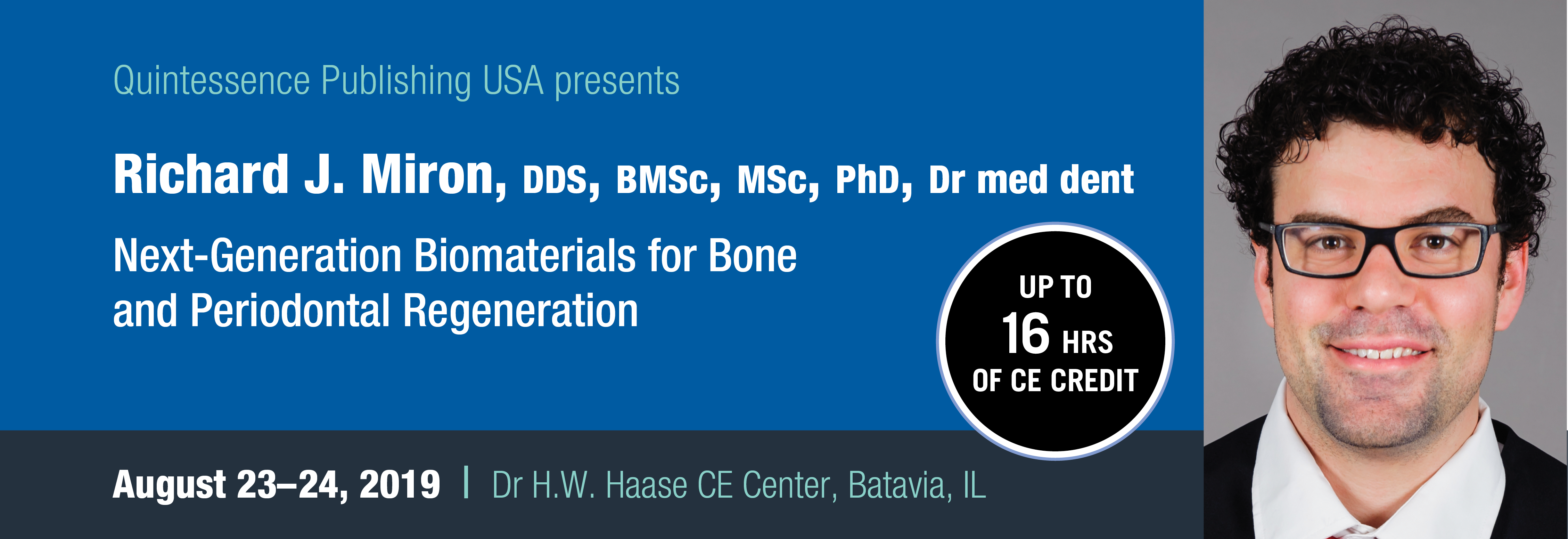
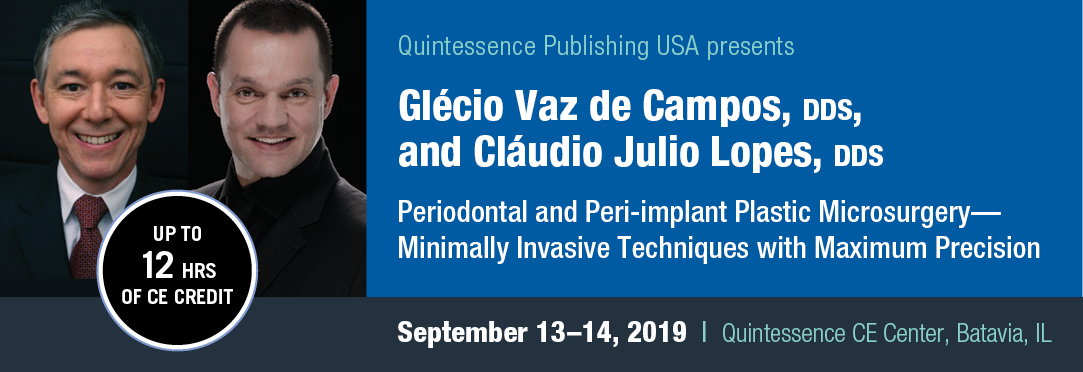
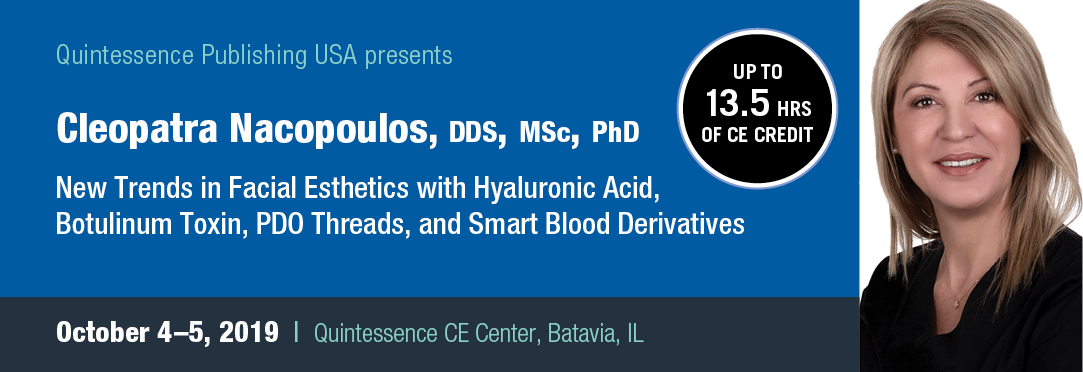
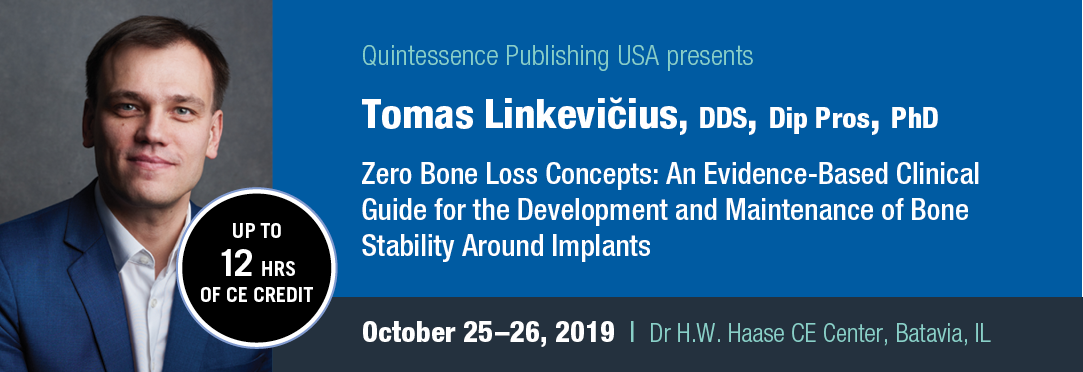
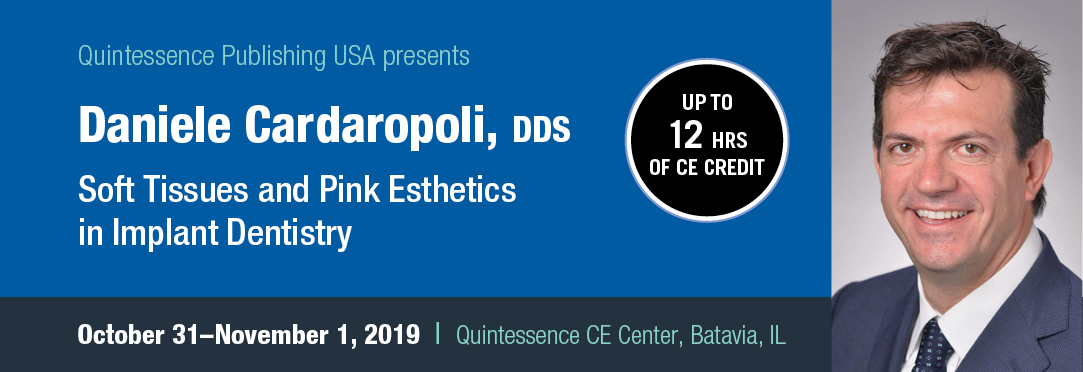


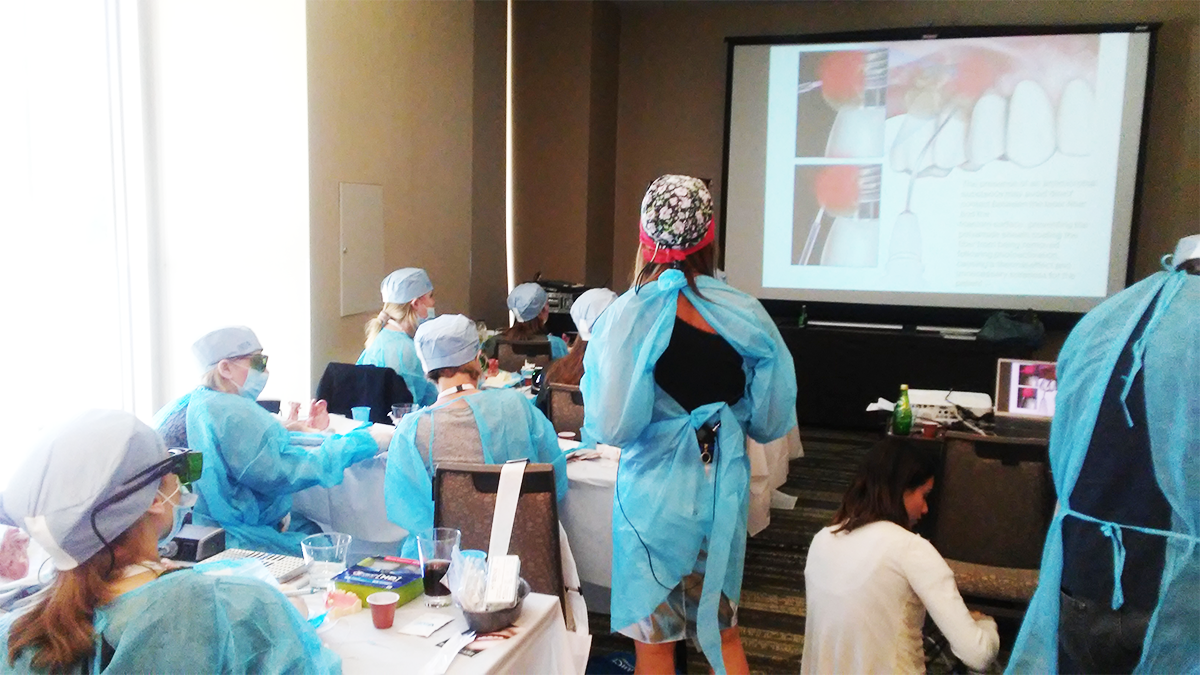

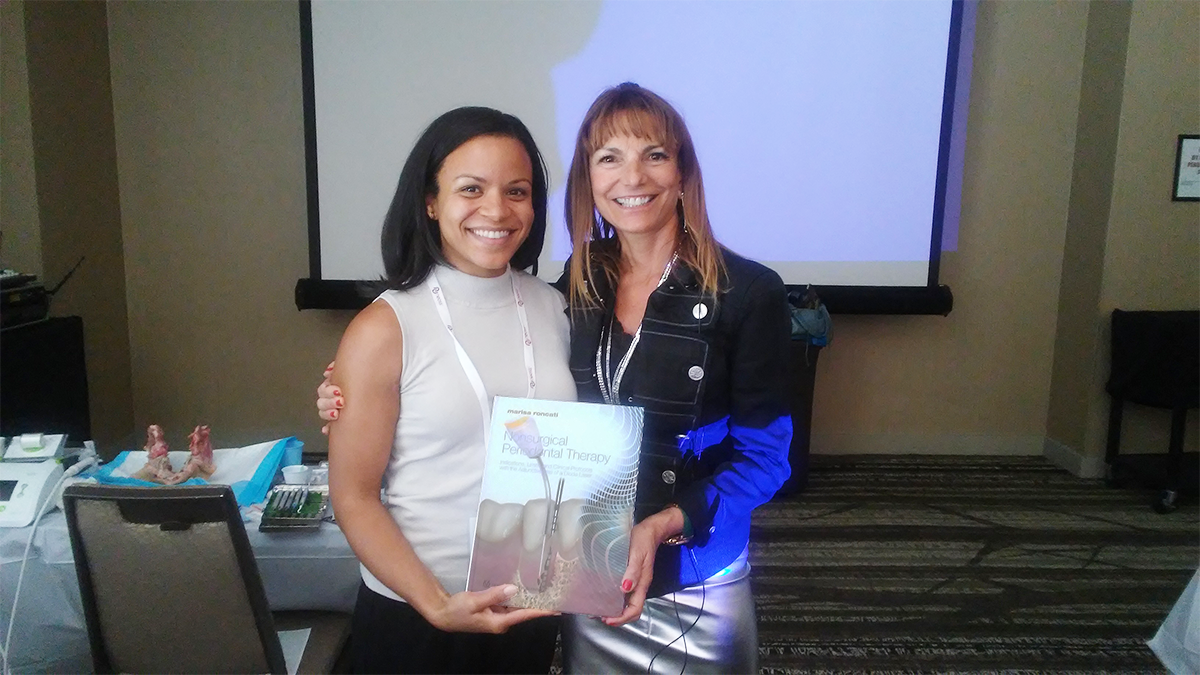









































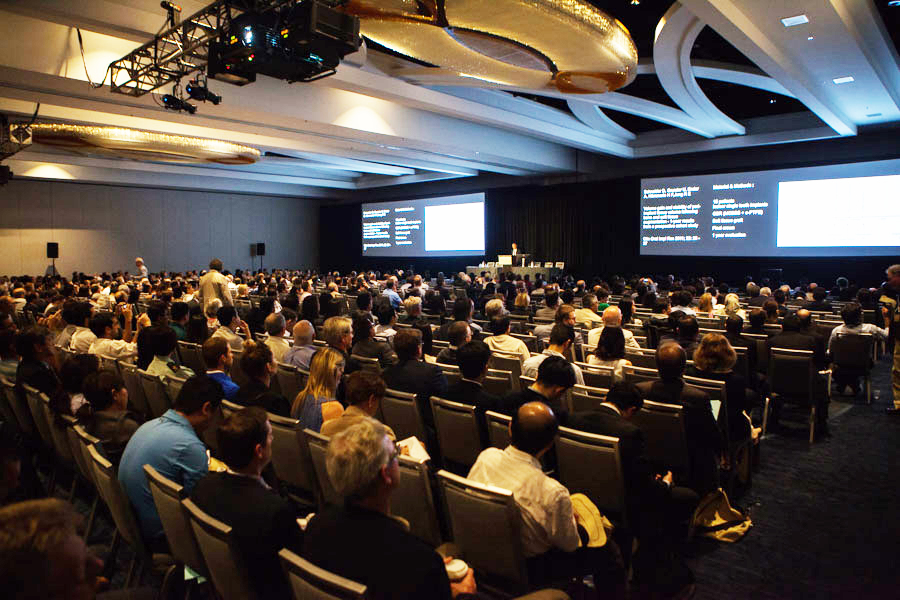
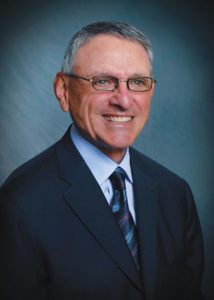 Myron Nevins, DDS, is the coeditor-in-chief of The International Journal of Periodontics & Restorative Dentistry and an associate clinical professor of periodontology at the Harvard School of Dental Medicine. He also holds the appointment of clinical professor of periodontics at the University of Pennsylvania School of Dentistry and Temple University Kornberg School of Dentistry. Dr Nevins is a past president of the American Academy of Periodontology and a former director and chairman of the American Board of Periodontology, where his contributions have been recognized with the Gold Medal and the Master Clinician Awards. He maintains a private practice limited to periodontics and implantology in Swampscott, Massachusetts, and is the founder and president of Perio Imp Research, Inc.
Myron Nevins, DDS, is the coeditor-in-chief of The International Journal of Periodontics & Restorative Dentistry and an associate clinical professor of periodontology at the Harvard School of Dental Medicine. He also holds the appointment of clinical professor of periodontics at the University of Pennsylvania School of Dentistry and Temple University Kornberg School of Dentistry. Dr Nevins is a past president of the American Academy of Periodontology and a former director and chairman of the American Board of Periodontology, where his contributions have been recognized with the Gold Medal and the Master Clinician Awards. He maintains a private practice limited to periodontics and implantology in Swampscott, Massachusetts, and is the founder and president of Perio Imp Research, Inc.





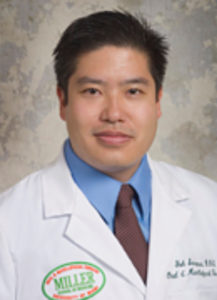 Yoh Sawatari, DDS After graduating from the University of Michigan School of Dentistry in 1995, Dr Sawatari joined the Public Health Service/Indian Health Service on the Navajo Reservation in Arizona. He worked as a general dentist for 5 years and received numerous commendations and awards and was promoted to Lieutenant Commander. He then completed his postdoctoral residency training in Oral and Maxillofacial Surgery at the University of Miami/Jackson Memorial Hospital Residency program. He then worked in private practice for 2 years before being recruited to return as faculty to the University of Miami, where he is currently an Associate Professor and the Director of Residency of the Oral and Maxillofacial Surgery program.
Yoh Sawatari, DDS After graduating from the University of Michigan School of Dentistry in 1995, Dr Sawatari joined the Public Health Service/Indian Health Service on the Navajo Reservation in Arizona. He worked as a general dentist for 5 years and received numerous commendations and awards and was promoted to Lieutenant Commander. He then completed his postdoctoral residency training in Oral and Maxillofacial Surgery at the University of Miami/Jackson Memorial Hospital Residency program. He then worked in private practice for 2 years before being recruited to return as faculty to the University of Miami, where he is currently an Associate Professor and the Director of Residency of the Oral and Maxillofacial Surgery program.